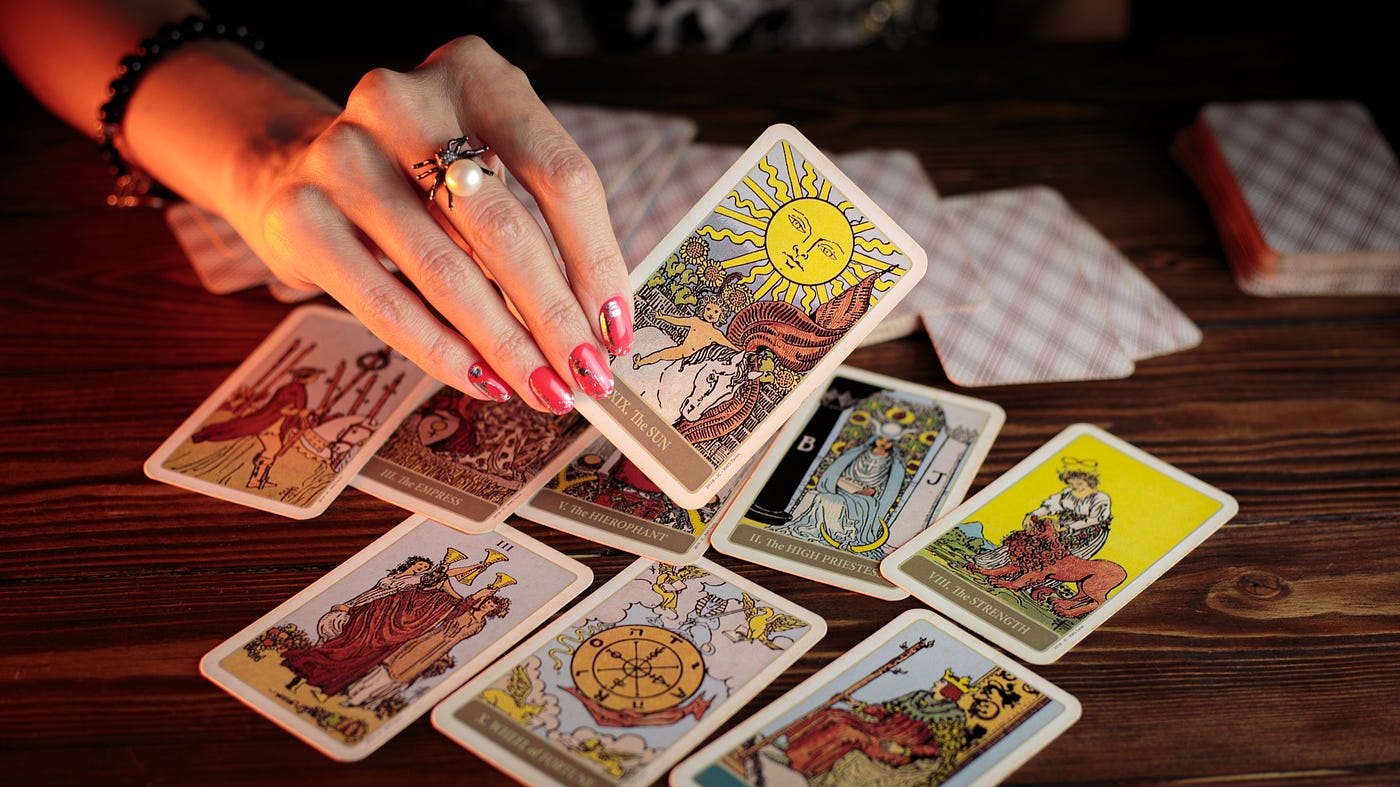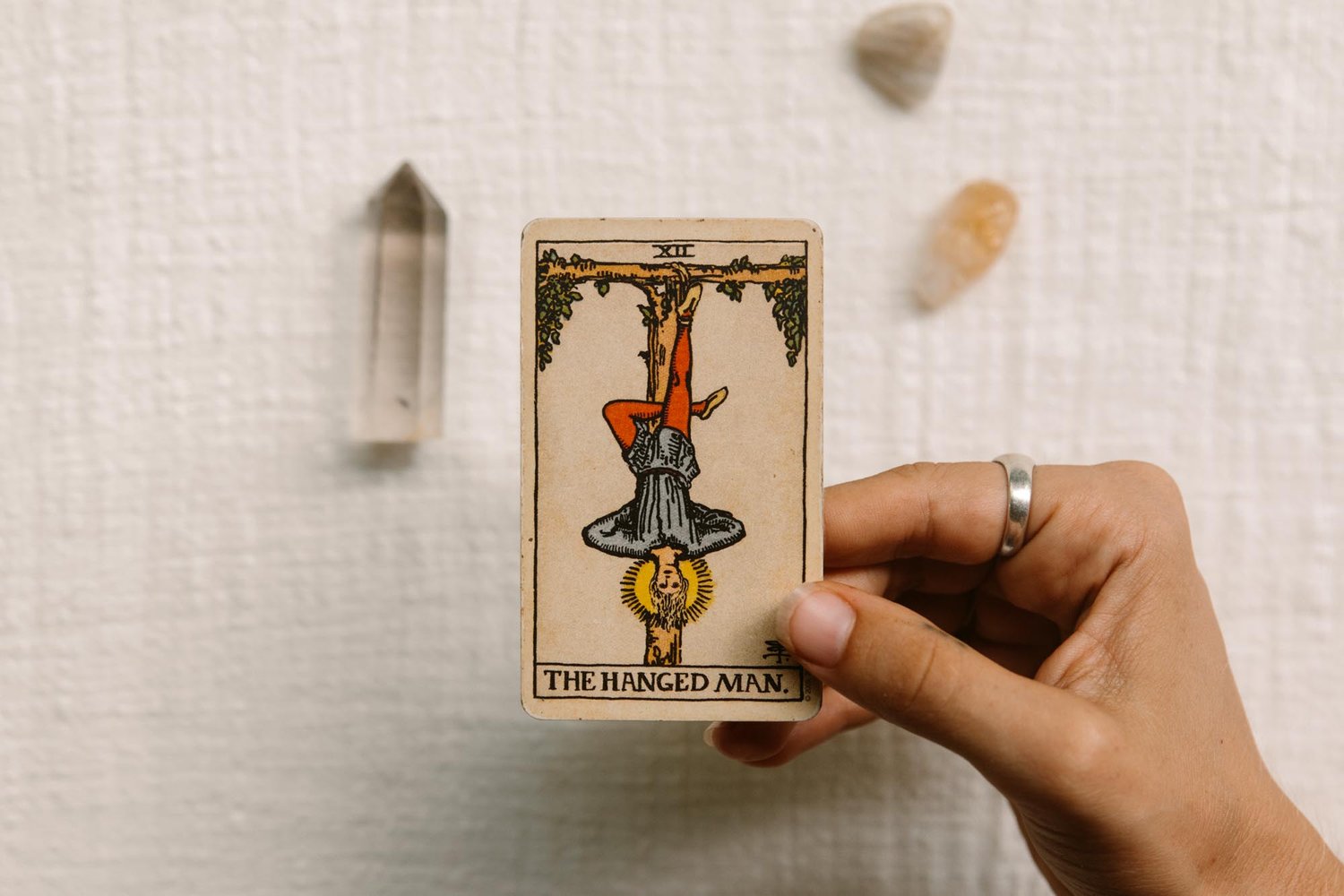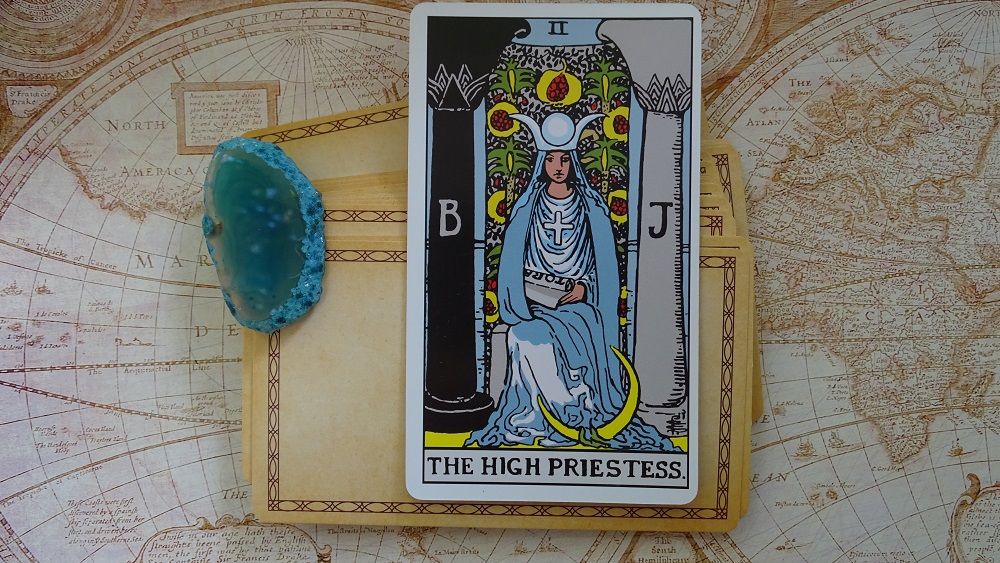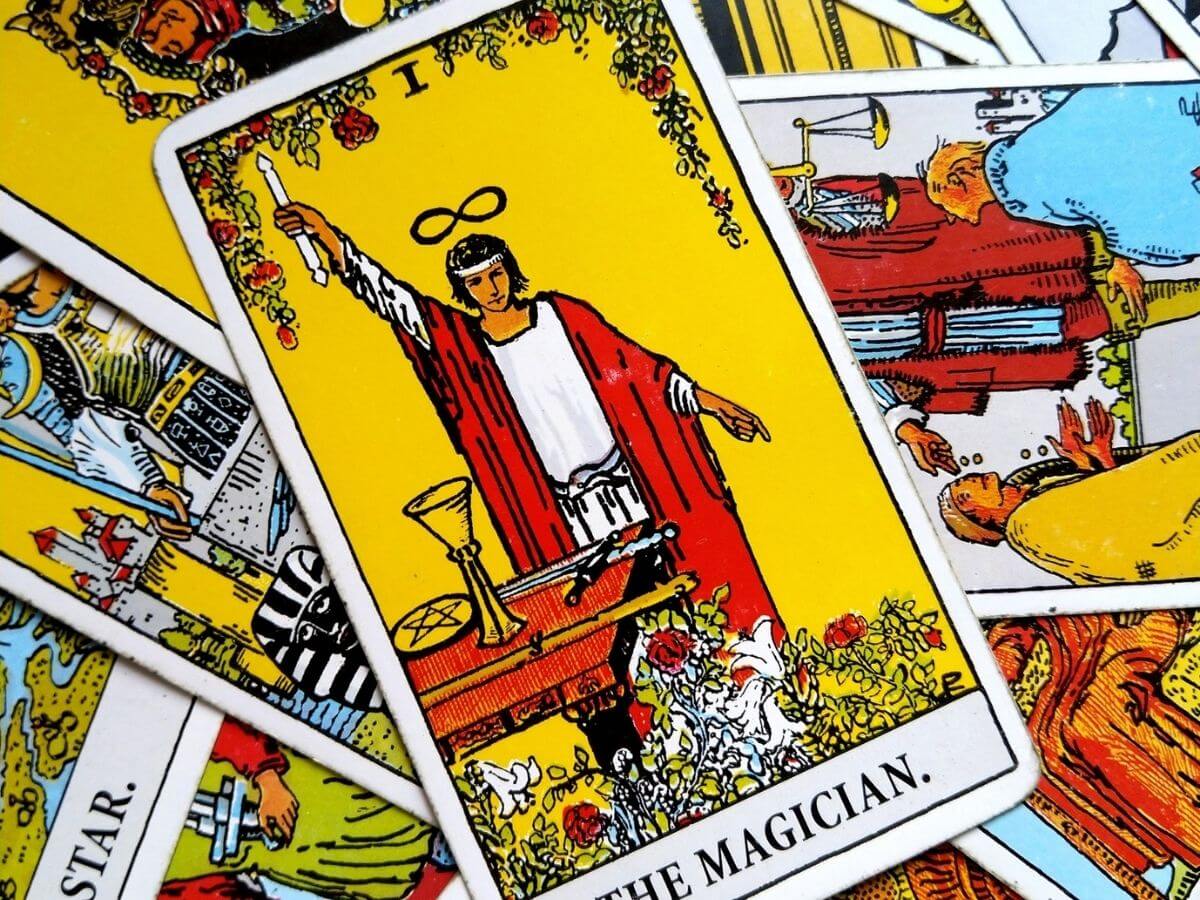
Above: Tarot card reading with multiple major arcana cards visible. Image courtesy of Unsplash.
Where do an ancient Greek priest, a collection of cups, a celestial body, and a powerful empress meet? In the metaphysical landscape of a deck of Tarot cards, of course! Yet, you may just as easily encounter a scientist meandering through this dazzling landscape of wands, lovers, and luscious gardens. That is to say, for many, the worlds of spiritualism and science are closely connected.
Spiritualism and science often form a beautiful interdisciplinary hybrid. Yet, Tarot, a traditional deck of divination cards, is often labeled as a pseudoscience. Such charged language demeans what has been a reliable source of emotional catharsis and hope for people all around the world from a variety of backgrounds.
In Tarot, there are a total of seventy-eight unique cards. The first fifty-six cards are the minor arcana, which apply to day-to-day situations and are divided into cups (emotions), wands (action), swords (intellect), and pentacles (material wealth). The other twenty-two cards are the major arcana, which each represent a unique concept or character (The Emperor, The Fool, The Hanged Man, Wheel of Fortune, etc.) and constitute more significant roadblocks or lessons in a person’s overall life.
So, by the end of this article, I hope to have facilitated your metamorphosis from the obstinate, dogmatic Emperor to the exploratory, wide-eyed Fool by widening your perspective on the metaphysical, spiritual, and multifaceted nature of the intersection of science and spiritualism.

Above: The Hanged Man card. Image courtesy of Two Wander.
Individual Interpretation
Tarot cards enable Tarot practitioners to examine their hardships from a variety of perspectives, to synthesize a narrative, and to deduce solutions to their problems. For this expansion of perspective to occur, though, it requires the user to suspend disbelief and give themselves to the interpretation of the cards. For instance, a user may ask the cards how to proceed following a job interview. While the individual may be confident that sending a follow-up email to express continued interest is the right move, if they pull The Hanged Man, the card would indicate to them that waiting and allowing the opportunity to flesh itself out without intervention might be wiser. With the spread of cards available in a Tarot deck, a myriad of approaches to this situation might be introduced, challenging the viewer to introspect and examine which path is the wisest. In this way, Tarot can serve as a tool to enhance emotional intelligence and introspection.
Similarly, The Hanged Man card depicts a man suspended upside down, hanging by both of his legs on a T-shaped wooden post. The man maintains a calm expression with a halo-like circle emanating behind his head. Many believe The Hanged Man tells the viewer to allow themselves to find comfort in their discomfort, to be restless and suspended, and to surrender themselves to new insight. Thus, The Hanged Man may inspire the viewer to find a new perspective on their life.

Above: The High Priestess card. Image courtesy of Esoteric Hut.
Therapeutic Applications
Tarot as a practice can have similar therapeutic benefits. Both therapist and patient can interact to reciprocally interpret the meaning of Tarot cards. Through this process, the patient will often unveil aspects of their subconscious through their analysis of the ambiguous visuals of the cards. For example, a therapist might interpret The Emperor card reversed as a stringent, suffocating partner in the patient’s life, whereas the patient may read the card as an embodiment of their judgmental, persistent father. Note that the position relative to the reader is a consideration of many Tarot readers (i.e., if the card is facing towards or away from the viewer). In a case like this, Tarot can enhance the introspective capacities of the patient, provide direction for the therapist, and facilitate patient-therapist bonding dynamics. This strategy unearths elements of the subconscious through symbolic analysis and recombinant narrative—concepts not far removed from Jungian psychological theories that therapists have utilized for decades—that would have otherwise gone undiscovered.
Similarly, The High Priestess card depicts a beautiful veiled woman in luscious blue cloth staring intensely at the viewer. She wears a crown with horns and has a crescent moon beneath her feet and pillars on either side of her with initials hinting at her dichotomous androgynous energy. The High Priestess is one of the few cards in Tarot with a direct connection to the world of the subconscious mind, yet is counterbalanced by the passivity, stillness, and resoluteness of the woman’s countenance. The High Priestess reminds the viewer to trust their intuition and reassures them to take a step back and listen to their instincts.

Above: The Magician card. Image courtesy of Karina Collins.
Support for Marginalized Groups
Tarot constitutes a promising avenue for providing psychotherapeutic support for marginalized communities. Since these communities are frequently excluded from more common Western therapeutic practices and may be dissuaded by cultural stigma, Tarot can provide an alternative avenue for introspection and peer support in these communities. Often, it is women, queer individuals, and other ‘outsiders’ of dominant social groups who utilize Tarot as a source of comfort. Without a doubt, any activity that serves as a common form of human expression and solidarity, such as Tarot, can have clear, tangible benefits in terms of socialization, community, and mental wellness. It is hard to discount the extent to which Tarot has served as a means to bring these communities together and exist as a consistent source of support and connection for decades. Tarot serves to remind these ostracized, marginalized groups of their intrinsic power and ability to shape society through confidence, perseverance, and radical change. In other words, Tarot can provide a voice to the voiceless, or, as The Magician would put it in Aramaic, “Abracadabra” (“I create as I speak”).
The Magician depicts a man adorning red and white garments connected to both the tangible and intangible realms as he valiantly hoists a white candle in his right hand. In front of the man, a table supports the four major elements and tools of creation: pentacles, cups, swords, and wands. The infinity symbol above the man’s head crystallizes his infinite potential and connection to both the conscious and subconscious realms. The Magician reminds the viewer that they need no miraculous deus ex machina or hidden talent, but rather, all of the resources and abilities they need to overcome their strife are already at their disposal. The man is supportive and mystical, reminding the viewer of their intrinsic strength and capacity for success, so long as they don’t hold themselves back from opportunities or doubt themselves.

Above: The Fool card. Image courtesy of Medium.
Self-Actualizing as The Fool
The Fool. This card portrays an androgynous, anthropomorphic figure bravely leaning forward at the precipice of a cliff. The white dog, the white flower, and the brilliant sun serve as motifs for the figure’s burgeoning innocence—an innocence that many new spiritualists and Tarot readers must first embody. So, whether you are racing to your local Earthbound to grab a Tarot deck or sardonically judging the repetitive nature of my writing format, I hope this article has elucidated some of the genuine benefits of Tarot. From the perspective of the individual, healthcare worker, scientist, or community as a whole, there is a clear utility in facilitating catharsis, introspection, and solidarity. Next time you or a loved one is unsure about a situation, try something new and flip a Tarot card. You don’t have to believe in the spiritual realm to reap the benefits of Tarot. Tarot will never require you to renounce your beliefs, only that you renounce your prejudice. One thing Tarot will do, however, is make you a fool, as indicated by the last card in your wonderful four-card spread. As The Fool is open to new beginnings, harboring a widened perspective that opens them up to the wealth of spectacular opportunities that The World has in store for them, so will you be. The Fool is naïve and inexperienced in this landscape of spirituality, much like you might be, but they embrace this fear with the Strength and Judgment of an emblazoned adventurer. As with any modern researcher or psychologist, solutions and results are not always guaranteed. Rather, the road to scientific discoveries or patient breakthroughs is filled with roadblocks and adversities that demand perseverance and strength.
So, I challenge you, dear reader: be The Fool. After all, you’ve already had your time as The Emperor. What a wonderful thing it is to be The Fool: unaware of all but afraid of none.
